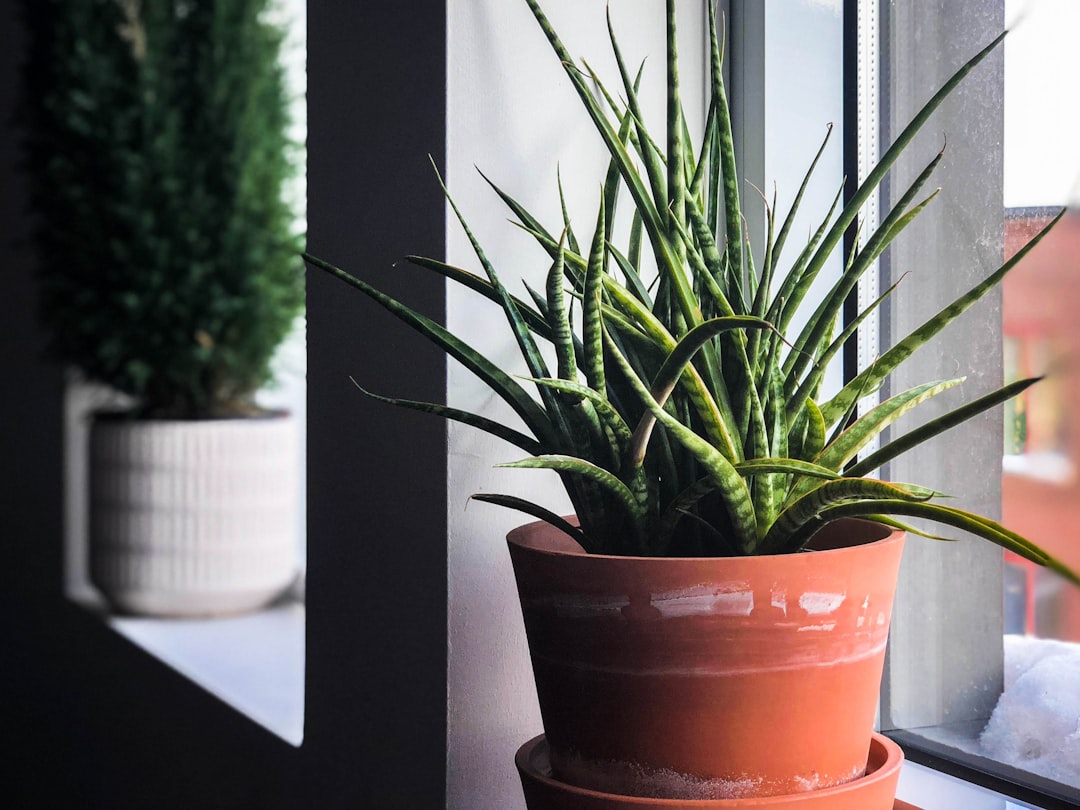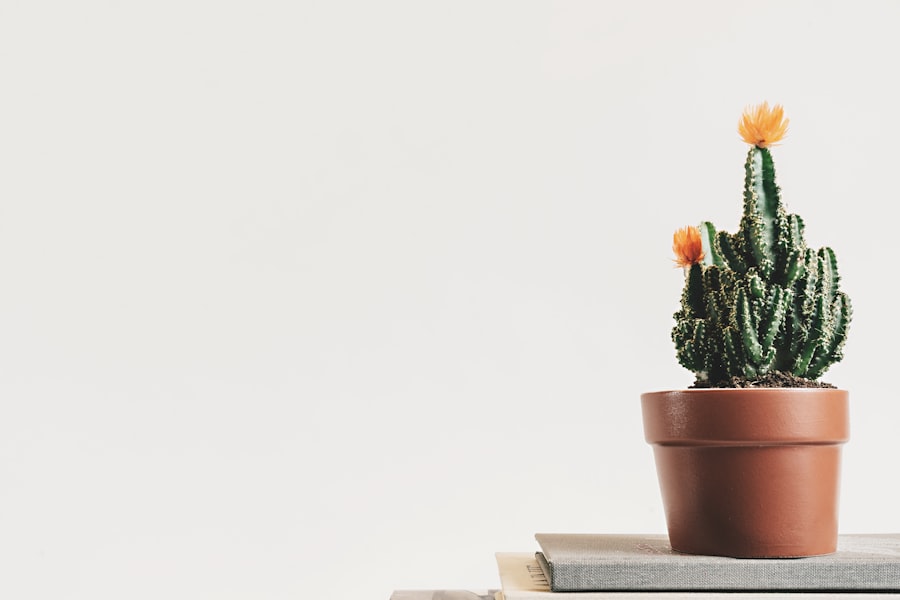Growing Fresh Cilantro: Tips for Pot Planting

Cilantro, also known as coriander or Chinese parsley, is a versatile herb that is commonly used in various cuisines around the world. It has a distinct flavor that adds a fresh and citrusy taste to dishes. Cilantro is often used in salsas, salads, curries, and soups, and it pairs well with ingredients such as lime, garlic, and chili peppers.
Growing cilantro at home has many benefits. Firstly, it allows you to have a constant supply of fresh cilantro whenever you need it. This is especially convenient if you use cilantro frequently in your cooking. Additionally, growing cilantro at home ensures that you have access to organic and pesticide-free herbs. You have control over the growing conditions and can avoid using harmful chemicals.
Key Takeaways
- Growing fresh cilantro is easy and rewarding.
- Pot planting cilantro allows for easy access and control over growing conditions.
- Choosing the right pot for cilantro involves considering drainage and size.
- Cilantro requires well-draining soil and regular watering with occasional fertilization.
- Cilantro thrives in cooler temperatures and partial sunlight, and can be propagated from seeds or cuttings.
Benefits of Pot Planting Cilantro
Pot planting cilantro offers several advantages over traditional garden planting. One of the main benefits is convenience and accessibility. With pot planting, you can have cilantro right at your doorstep or kitchen window, making it easy to harvest whenever you need it. This is particularly useful for those who live in apartments or have limited outdoor space.
Pot planting also gives you control over the growing conditions of cilantro. You can choose the right soil, adjust the amount of sunlight and water, and protect the plant from extreme temperatures or pests. This level of control ensures that your cilantro grows healthy and flavorful.
Furthermore, pot planting is a space-saving option for small gardens or apartments. Cilantro doesn’t require a large area to grow, so even if you only have a small balcony or windowsill, you can still enjoy fresh cilantro throughout the year.
Choosing the Right Pot for Cilantro
When choosing a pot for cilantro, there are a few factors to consider. Firstly, size and depth requirements are important. Cilantro has a shallow root system, so a pot that is at least 6 inches deep should be sufficient. However, if you plan on growing multiple cilantro plants in the same pot, opt for a larger pot to allow for proper root development.
Material options for pots include clay, plastic, and ceramic. Clay pots are porous and allow for better airflow and drainage, but they can dry out quickly. Plastic pots are lightweight and retain moisture well, but they may not provide as much airflow. Ceramic pots are aesthetically pleasing but can be heavy and may require additional drainage holes.
Drainage considerations are crucial for cilantro as it prefers well-draining soil. Ensure that your pot has drainage holes at the bottom to prevent waterlogging, which can lead to root rot.
Soil Requirements for Cilantro
| Soil Requirement | Ideal Range |
|---|---|
| Soil pH | 6.0-7.0 |
| Soil Type | Well-drained, loamy soil |
| Soil Temperature | 60-70°F (15-21°C) |
| Soil Nutrients | High in nitrogen, phosphorus, and potassium |
| Soil Moisture | Moist, but not waterlogged |
Cilantro thrives in slightly acidic to neutral soil with a pH level between 6.2 and 6.8. It also prefers fertile soil that is rich in organic matter. You can test the pH level of your soil using a soil testing kit available at garden centers or online.
When it comes to soil options, you can choose between organic and inorganic options. Organic soil is rich in nutrients and beneficial microorganisms, making it ideal for cilantro growth. You can create your own organic soil mix by combining equal parts of compost, peat moss, and perlite or vermiculite.
Inorganic soil options include potting mixes or commercial blends specifically formulated for herbs or vegetables. These mixes often contain a balanced blend of nutrients and have good drainage properties.
Before planting cilantro, it’s important to prepare the soil properly. Remove any weeds or debris from the pot and loosen the soil with a garden fork or trowel. Mix in compost or organic matter to improve the soil’s fertility and structure.
Watering and Fertilizing Cilantro
Proper watering and fertilizing are essential for the healthy growth of cilantro. Cilantro prefers consistently moist soil, but it’s important not to overwater as it can lead to root rot. Water the plant when the top inch of soil feels dry to the touch. Ensure that the pot has proper drainage to prevent water from pooling at the bottom.
When it comes to fertilizing cilantro, a balanced fertilizer with equal amounts of nitrogen, phosphorus, and potassium is recommended. You can use a slow-release granular fertilizer or a liquid fertilizer diluted according to the manufacturer’s instructions. Apply the fertilizer every 4-6 weeks during the growing season.
Signs of overwatering include yellowing leaves, wilting, and root rot. On the other hand, signs of underwatering include drooping leaves, dry soil, and stunted growth. Adjust your watering schedule accordingly based on these signs.
Sunlight and Temperature Requirements for Cilantro

Cilantro thrives in full sun to partial shade conditions. It requires at least 4-6 hours of direct sunlight per day for optimal growth. If you’re growing cilantro indoors, place it near a south-facing window or use grow lights to provide sufficient light.
Cilantro prefers cool temperatures and can bolt or go to seed quickly in hot weather. The ideal temperature range for cilantro is between 50°F and 85°F (10°C and 29°C). If you live in a region with hot summers, consider providing some shade during the hottest part of the day or growing cilantro in a location with afternoon shade.
During colder months, cilantro can tolerate light frost but may require protection from freezing temperatures. Consider using row covers or bringing potted cilantro indoors during extreme cold spells.
Propagating Cilantro from Seeds or Cuttings
Cilantro can be propagated from seeds or cuttings. If you choose to grow cilantro from seeds, start by soaking the seeds in water for 24 hours to improve germination. Sow the seeds directly into the pot, covering them with a thin layer of soil. Keep the soil consistently moist until the seeds germinate, which usually takes 7-10 days.
To propagate cilantro from cuttings, select a healthy stem with several leaves and cut it just below a leaf node. Remove the lower leaves and place the cutting in a glass of water. Change the water every few days to prevent bacterial growth. Once roots have formed, transfer the cutting to a pot with well-draining soil.
Common Pests and Diseases of Cilantro
Cilantro is relatively resistant to pests and diseases, but there are a few common issues to watch out for. Aphids, spider mites, and whiteflies can occasionally infest cilantro plants. These pests can be controlled by spraying the plants with a mixture of water and insecticidal soap or neem oil.
Damping off is a common disease that affects cilantro seedlings. It is caused by fungal pathogens in overly moist soil. To prevent damping off, ensure that the soil is well-draining and avoid overwatering.
Powdery mildew is another fungal disease that can affect cilantro. It appears as a white powdery coating on the leaves and stems. To prevent powdery mildew, provide good air circulation around the plants and avoid overhead watering.
Harvesting and Storing Cilantro
Cilantro leaves can be harvested once the plant reaches about 6 inches in height. Harvesting can be done by snipping off individual leaves or cutting the entire stem just above the soil level. It’s important not to remove more than one-third of the plant at a time to ensure continued growth.
To store cilantro, place the freshly harvested stems in a glass of water and cover them loosely with a plastic bag. Store the cilantro in the refrigerator, changing the water every few days to keep it fresh. Alternatively, you can freeze cilantro by chopping it finely and placing it in ice cube trays filled with water or oil.
Creative Ways to Use Fresh Cilantro
Cilantro is a versatile herb that can be used in a variety of culinary and non-culinary ways. In addition to adding flavor to dishes such as salsas, salads, and curries, cilantro can be used to make pesto, chimichurri sauce, and infused oils. It can also be used as a garnish for soups, tacos, and grilled meats.
Non-culinary uses for cilantro include using it as a natural air freshener or adding it to homemade beauty products such as soaps or lotions. Cilantro has detoxifying properties and can help remove heavy metals from the body.
To incorporate cilantro into your meals and drinks, try making cilantro lime rice, cilantro lime dressing, or cilantro lime shrimp. You can also use cilantro in smoothies or cocktails for a refreshing twist.
Growing fresh cilantro at home is a rewarding experience that allows you to have a constant supply of this versatile herb. By pot planting cilantro, you have the convenience and accessibility of having it right at your doorstep or kitchen window. You also have control over the growing conditions, ensuring that your cilantro grows healthy and flavorful.
Choosing the right pot, soil, and providing proper watering and fertilizing are crucial for the successful growth of cilantro. Pay attention to sunlight and temperature requirements, as well as common pests and diseases that may affect your plants. Harvesting and storing cilantro properly will ensure maximum freshness.
With its numerous culinary and non-culinary uses, cilantro is a valuable herb to have in your kitchen. Get creative and experiment with different recipes and ideas to fully enjoy the flavors and benefits of fresh cilantro. So why not give it a try and start growing cilantro at home today?
If you’re interested in planting cilantro in a pot, you might also find this article on Lawn World’s website helpful. They have a comprehensive guide on container gardening, including tips and techniques for growing herbs like cilantro. Check it out here to learn more about creating your own herb garden in pots.
FAQs
What is cilantro?
Cilantro is an herb that is commonly used in cooking. It is also known as coriander or Chinese parsley.
Can cilantro be grown in a pot?
Yes, cilantro can be grown in a pot. It is a great option for those who do not have a lot of outdoor space or who want to grow herbs indoors.
What kind of pot should I use to plant cilantro?
You should use a pot that is at least 6 inches deep and has drainage holes at the bottom. A clay or ceramic pot is a good option as it will help to keep the soil moist.
What kind of soil should I use to plant cilantro?
You should use a well-draining potting mix that is rich in organic matter. Cilantro prefers soil that is slightly acidic with a pH between 6.0 and 7.0.
How often should I water my cilantro plant?
Cilantro plants should be watered regularly, but not overwatered. The soil should be kept moist, but not waterlogged. Water your cilantro plant when the top inch of soil feels dry to the touch.
How much sunlight does cilantro need?
Cilantro prefers partial shade to full sun. It should be placed in a location that receives at least 4-6 hours of sunlight per day.
When can I harvest my cilantro?
Cilantro can be harvested when the plant is about 6 inches tall. You can harvest the leaves as needed, but be sure to leave at least 1/3 of the plant intact so that it can continue to grow.



